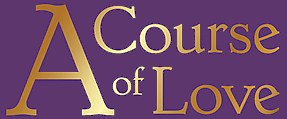Friday morning. I come in from the cabin feeling aimless. It is the morning after I was on a radio show in which I didn’t feel that my words served me particularly well. Such things cause aimlessness, I think. You wander around with the question of them, which is vague and mildly irritating, like a dripping faucet. In this wandering, I pick up a notecard from the Borealis Press that depicts “Too tired to go back” from Robert Shetterly’s Annunciation Paintings. It’s been sitting there a long time. I’ve been meaning to find out more about it.
The source of these note cards is a mystery to me. I found them in a box two years ago while cleaning out my canning room. They’re unused. Blank inside. I’m sure it was me that bought them, and yet they niggle at me. The copyright on the back is 1994. Six months ago I framed one. All this time I’ve been meaning to look up Robert Shetterly, to see what I could find out about the Annunciation Paintings. Being aimless, I fall to the task.
I can’t find what I’m looking for but I find that Shetterly has been painting the series of portraits, Americans Who Tell the Truth, for more than ten years. I realize I knew of this work, but had not associated it with the artist on my little notecards. On his website, it is said that in this older series, he reflects on the metaphor of The Annunciation. I want to know: What reflections? What metaphor? Unfortunately, the popularity of Americans Who Tell the Truth makes finding these reflections beyond me.
Yet I have already followed threads and I keep going, finding an imposing and inspiriting amount of talk on civic discourse: places where art and poetry, spirituality, politics, and nature all swirl in the same current. I feel better and reminded of so many things. Shetterly says, “We paint not to express ourselves but to find out what it is we want to express.” I wonder . . . Did I find out what I wanted to express as I fumbled with the interviewer’s questions Thursday night? I wonder . . . Did I find, in this quote, why ACOL is often hard to talk about? Am I continually caught in the act of finding what wants to express itself? It is a feeling I love—this wondering. When I feel this way, I feel as if I stand on the edge, on the verge of discovering a new continent.
Standing in this new place, I do not search so much as turn. I turn, and there, a little to the right, it comes to me to go to the reflections on “art” in A Course of Love. These are from the third Treatise on the Personal Self:
Expressions you call art are desires to share the Self in a new way. These expressions you call art are expressions of a Self who observes and interacts in relationship. They are not expressions that remain contained to who you are or who you think yourself to be. They are not expressions of the self alone. They are not expressions of the self alone in terms you might consider autobiographical, and they are not expressions of the self alone that you would consider the self in separation. They are rather expressions of the Self in union—expressions of what the Self sees, feels, envisions, imagines in relationship. T3:2.1
What purpose has art? While art is but a representation of what the artist chooses to share, few of us would call these representations useless or without value. Art is a representation but it also becomes something in truth, something that has been named art. Art becomes something in truth by expanding awareness, or in other words, by making something known. This is what true relationship does and is its purpose as well as what it is. T3:2.2
Not to leave out the beauty of music, we hear about the Song of God in the fourth treatise, A Treatise on the New:
You are God’s harmony, God’s expression, God’s melody. You, and all that exist with you, form the orchestra and chorus of creation. You might think of your time here as that of being apprentice musicians. You must learn or relearn what you have forgotten so that you can once again join the chorus. So that you can once again be in harmony with creation. So that you can express yourself within the relationship of unity that is the whole of the choir and the orchestra. So that you can realize your accomplishment in union and relationship. T4:5.2
You are the substance of the universe. The same energy exists in the stars of the heavens and the waters of the ocean that exists in you. This energy is the form and content of the embrace. T4:5.5
Tomorrow or the next day, next week or next month, I feel certain I’ll begin to inch along the edge of the metaphor of The Annunciation. It feels so relevant, familiar, and feminine to me that I will want to follow its threads. I have been gifted with threads. I am filled, once again, with the joy and wonder it is to have them come—aimlessly—and dance about, like kites in the wind.
Robert Shetterly quote found here: http://www.americanswhotellthetruth.org/the-artist
ACOL quotes cited from the Combined Volume.
Still to come, quotes on expression from The Dialogues.



I think that all is always announced, inspired, revealed. All we have to do is listen.
All Love is already there, announced, announcing, relating, uniting. Godly living!
Thank you, Love!